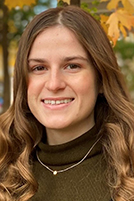Reheman (Raymond) Adili, M.D.
Blood and blood vessels work together to maintain normal blood perfusion through organs to deliver nutrients and remove waste. This is vital to our health. Unwanted blood clots and uncontrollable bleeding put our lives in danger.
The Adili laboratory is studying how blood cells and proteins participate in clot formation in arteries, veins, and capillaries during injury, inflammation, and different diseases. Using state-of-the-art confocal intravital microscopy and enhanced contract molecular ultrasound imaging systems, we can visualize blood cells and proteins in circulation and dissect their contributions to clot formation in various preclinical animal models.
Areas of Study
- Platelet physiology and thrombosis
- Pathophysiology of microvascular thrombosis
- Restoring hemostasis in bleeding disorders
Dr. Adili’s Background
- 2022-present: Associate Member, Director of Intravital Microscopy Imaging Core, Bloodworks Research Institute, Seattle, Washington
- 2021-2022: Associate Research Scientist: University of Michigan, Department of Pharmacology, Ann Arbor, Michigan
- 2015-2021: Research Assistant Professor: University of Michigan, Department of Pharmacology, Ann Arbor, Michigan
- 2014-2015: Research Instructor, Thomas Jefferson University, Philadelphia, Pennsylvania
Adili Laboratory
Our research interest is to investigate the molecular mechanisms of thrombosis and hemostasis in vascular injury, inflammation, or cardiovascular disorders. Current ongoing projects include studying the pathophysiology of microvascular thrombosis, developing novel therapeutic agents to treat thrombotic thrombocytopenic purpura (TTP), and restoring hemostatic clots in bleeding disorders, such as trauma and hemophilia.
Areas of Study
Area of Study in detail:
- Platelet physiology and thrombosis
Thrombotic diseases such as heart attack, stroke, and venous thromboembolism are the leading causes of mortality and morbidity worldwide. Platelets, the smallest blood cells, play central roles in these diseases. We have a long-term interest in elucidating how platelets interact with various proteins in plasma and vessel walls to form thrombosis under disease conditions. Using multiple advanced techniques, including multi-channel high-speed intravital confocal microscopy, platelet aggregometer, and microfluidic devices, we have deepened our understanding of this pathophysiological process at cellular and molecular levels.
- Pathophysiology of microvascular thrombosis
Thrombotic thrombocytopenic purpura (TTP) is a rare but life-threatening disease characterized by systemic microvascular thrombosis. It is associated with ADAMTS13 deficiency, a von Willebrand factor (VWF) cleaving protease in plasma. However, the pathophysiology of microvascular thrombosis in TTP is not well understood. Taking advantage of real-time intravital microscopic imaging in mice, we can monitor VWF-mediated-platelet thrombi formation in microvessels and examine the effect of potential therapeutic agents on preventing or breaking down the thrombi. In collaboration with Dr. Lopez’s lab, we have shown that N-acetylcysteine (NAC) effectively prevents microvascular thrombosis in vivo in TTP (J Clin Invest.2011, 121:593). Recently our lab has shown that VWF self-association, a process of dynamic assembly of VWF strands and fibers, initiates platelet adhesion and thrombus formation in microcirculation in mice. Surprisingly, these processes do not require platelet activation and fibrin formation. Treatment of recombinant ADAMTS13 prevents VWF self-association and dissolves brain microvascular thrombosis in mice (ATVB 2019, 39:1817). We will continue studying the underlying pathogenesis and pathophysiology of TTP and testing new agents that break down microvascular thrombosis.
- Restoring hemostasis in bleeding disorders
Bleeding disorders and abnormal hemostasis are caused by dysfunctions of platelet, coagulation factor, or endothelium, and can be inherited, such as hemophilia, or acquired due to antithrombotic therapy. Currently, there are limited therapeutic agents available to restore hemostasis and prevent bleeding caused by antithrombotic treatments. Our lab is studying the effect of snake venom-derived hemocoagulase on hemostatic clot formation and bleeding in hypocoagulant conditions in vivo using intravital microscopy and bleeding assays, and ex vivo using thromboelastography and platelet function tests. The preliminary data show that a snake venom-derived hemocoagulase may be a novel hemostatic agent to limit bleeding in hemophilia and reverse the effect of antithrombotic treatments.
Representative Publications
Click here to view.
Adili Laboratory Members

Raymond Adili, M.D.
Associate Member
Director of Intravital Microscopy Imaging Core
Bloodworks Northwest
Research Institute
Bloodworks Northwest
Research Institute
1551 Eastlake Avenue E, Suite 100
Seattle, WA 98104
Email: [email protected]
Phone: (206) 689-6346
FAX: 206-587-6056
Tena Petersen
Senior Administrative Coordinator
Email: [email protected]
Phone: (206) 568-2246
Fax: (206) 587-6056



